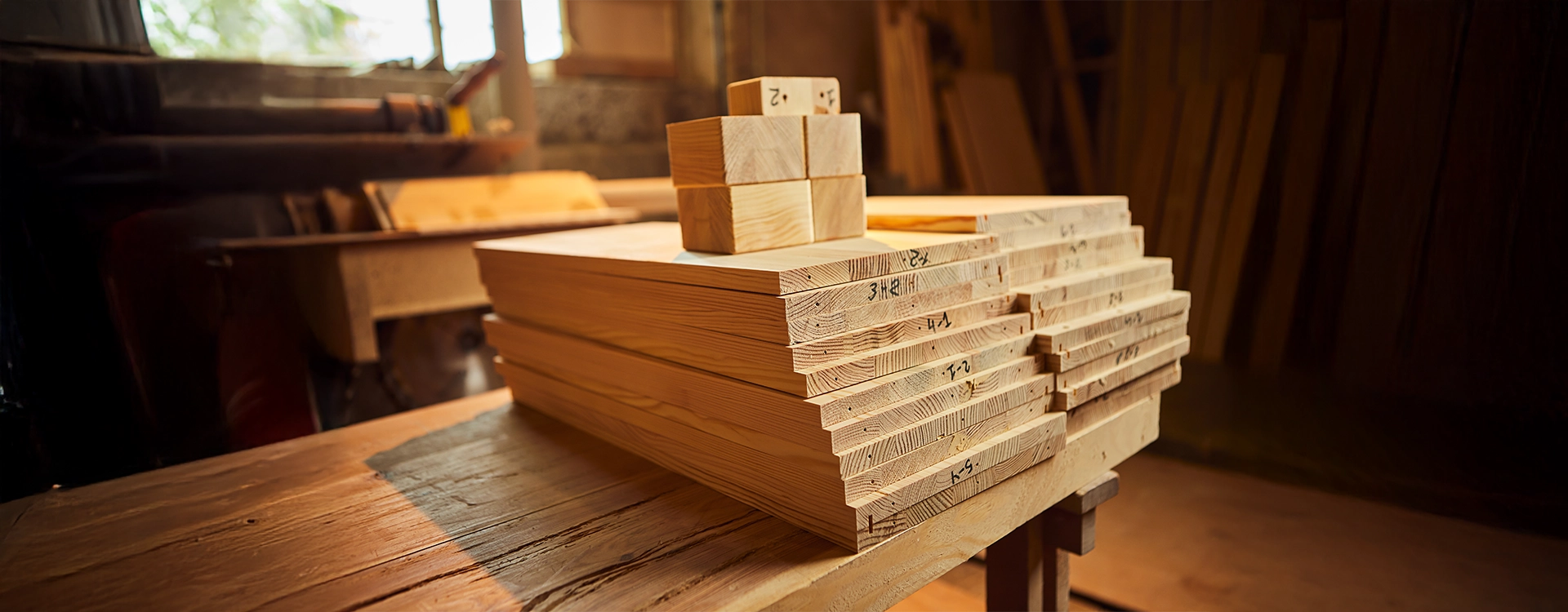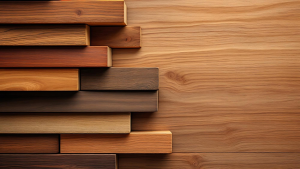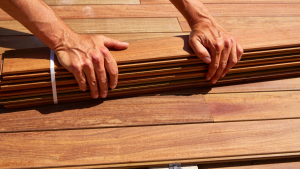A Comprehensive Guide to Merbau Decking

When designing a beautiful, long-lasting outdoor space, the choice of timber is paramount. Few materials blend tropical luxury with structural integrity as effectively as merbau decking. This imported hardwood has become a global favourite, renowned for its rich colour, exceptional durability, and high resistance to the elements. Whether you’re planning a sprawling entertainment area or a simple balcony, understanding the qualities of a merbau deck is key to a successful project.
This guide provides a comprehensive overview of merbau timber decking, covering its origins, unique characteristics, common dimensions, and the crucial steps needed for proper installation and maintenance.
The Allure of Merbau: Origins and Aesthetics
Merbau, scientifically known as Intsia bijuga, is a dense tropical hardwood native to Southeast Asia, particularly Malaysia, Indonesia, and Papua New Guinea. It is often referred to as “Kwila” in certain regions. Its popularity stems from its unique combination of natural beauty and impressive structural properties.
Colour and Patina
The defining feature of merbau decking timber is its vibrant colour. When first milled and installed, the wood exhibits a striking golden-brown to reddish-brown hue. With a coat of quality decking oil, this colour deepens into a rich, warm mahogany, creating a luxurious and inviting atmosphere. If left untreated, Merbau will naturally weather to a soft, silver-grey patina over time, which many homeowners find equally appealing for its low-maintenance, aged look.
Grain and Texture
Merbau features a moderately coarse texture and an interlocked or wavy grain, which contributes to its stability and visual interest. It is also often characterized by small, yellow mineral deposits in the wood vessels, which appear as flecks of gold in the grain—a feature that adds to its exotic appeal.
Performance: Why Merbau is a Class 1 Timber
Merbau’s resilience is its greatest asset, making it a reliable choice for diverse climates, including those with high humidity or intense sun exposure.
Durability Class 1
Merbau is classified as a Durability Class 1 timber for above-ground use. This is the highest durability rating, confirming its exceptional resistance to:
- Rot and Decay: Its natural density and high oil content prevent moisture absorption, giving it an expected service life of 40 years or more.
- Insects and Borers: The natural compounds within the timber repel most common wood-boring insects and termites.
Stability and Hardness
With a Janka hardness rating typically around 8.6 kN, Merbau is hard enough to resist dents and wear from heavy foot traffic and outdoor furniture. Its stability is highly valued in decking applications; it is renowned for its tendency to resist twisting, cupping, and warping better than many other woods, provided it is properly seasoned and installed.
Understanding Merbau Decking Dimensions
When purchasing merbau decking, you will encounter several common sizes, each offering a distinct aesthetic and practical advantage.
The Standard: 90mm Merbau Decking
The traditional and most common size is the 90mm merbau decking board (typically $90 \text{mm} \times 19 \text{mm}$). This width is highly versatile and fits well into smaller spaces, offering a balanced, classic deck appearance with ample visible joins.
The Statement: 140mm Merbau Decking
The wider 140mm merbau decking board (such as the popular merbau decking 140 x 19 size) is a growing trend in modern design. Opting for 140 merbau decking boards offers several key benefits:
- Enhanced Visual Impact: The wide boards create a sense of expansive, seamless luxury, aligning with contemporary architectural trends for clean, broad surfaces.
- Showcasing the Timber: The larger surface area better displays Merbau’s rich colour variation and beautiful grain pattern.
- Reduced Installation Labour: Fewer boards are needed to cover the same area, which reduces the total number of fasteners required and can cut down on installation time.
Crucial Installation: Managing the Tannins (The “Bleeding” Factor)
The most critical step in installing a merbau deck is managing the tannins—the natural, water-soluble oils that give the wood its durability and colour.
The Tannin Bleed
When Merbau boards are first exposed to moisture (rain, dew, or washing), these dark reddish-brown tannins will leach out, or “bleed.” This runoff can severely stain adjacent surfaces such as concrete, paving stones, pool coping, and rendered walls.
The Pre-Washing Process
To avoid permanent staining, proper installation must include a de-tanning or pre-washing phase.
- Preparation: Place the Merbau boards on sacrificial material (like old plastic sheeting or bricks) away from sensitive surfaces.
- Cleaning Solution: Apply a dedicated deck-cleaning or de-tannin solution (usually an oxalic acid-based product) according to the manufacturer’s instructions.
- Washing: Agitate the surface with a stiff-bristle brush and rinse thoroughly with clean water. Repeat this process two or three times until the runoff water is clear or light in colour.
- Drying: Allow the boards to fully dry before installation.
Maintaining Your Merbau Decking Timber
Merbau is low-maintenance, but not maintenance-free. Regular care will preserve its stunning colour and maximise its 40+ year lifespan.
1. Oiling for Colour Retention
To maintain the rich, reddish-brown colour, a UV-protectant decking oil must be applied.
- Initial Oil: Apply the first coat after the de-tanning process is complete and the timber is fully dry.
- Regular Re-Oiling: Reapply the oil annually or every 18 months, depending on the sun exposure and climate. Oils with a Merbau or “redwood” tint are ideal as they enhance the natural colour and provide superior UV protection.
2. Cleaning
Regular cleaning with a hose, broom, and a mild deck cleaner is essential to remove surface dirt, mould, and mildew, which can make the deck slippery and compromise the finish.
3. Ventilation
Ensure the deck design allows for ample cross-flow ventilation underneath. This is paramount for all decking, especially wider boards like 140mm merbau decking, as it allows moisture to dry evenly, preventing cupping and extending the life of the timber.
Conclusion
Choosing merbau decking is an investment in tropical elegance and long-term durability. Its Class 1 rating, beautiful reddish-brown tones, and excellent stability make it a standout choice for any high-quality outdoor project. By understanding the importance of managing the tannins and utilizing the sophisticated aesthetic of wide 140 merbau decking boards, you can create a stunning and enduring outdoor living space that will be enjoyed for generations.
Ready to transform your space with quality that lasts? Explore the range at Melbourne Timber Supplies—your go-to source for Hardwood Decking in Australia.
Frequently Asked Questions (FAQ)
Q1. Why do Merbau boards “bleed,” and how do I stop it from staining my concrete?
Merbau “bleeds” because it has high levels of natural tannins (oils) that leach out when the wood gets wet. To stop staining, you must thoroughly pre-wash or “de-tannin” the boards with a specialised deck cleaning solution (usually oxalic acid-based) two or three times until the runoff water runs clear before installation
Q2. Is Merbau suitable for a deck around a swimming pool?
Yes, merbau decking is highly suitable for pool areas. Its Durability Class 1 rating and natural oil content provide excellent resistance to moisture and decay, making it a robust choice for wet environments.
Q3. How often should I oil my Merbau deck to keep its rich colour?
To preserve the rich, reddish-brown colour of your merbau timber decking, apply a high-quality decking oil with a UV-protectant and Merbau tint every 12 to 18 months. Without regular oiling, the timber will naturally fade to a soft silver-grey patina.
Q4. What is the advantage of using 140mm merbau decking over 90mm?
The wide 140mm merbau decking creates a contemporary, luxurious look. It reduces the number of visual join lines, making the deck appear more expansive and allowing the timber grain’s natural beauty to be more prominently displayed.
Q5. Does Merbau require special fasteners for installation?
It’s highly recommended to use stainless steel fasteners (Grade 304 or 316 for coastal areas) to prevent the screws from rusting, which would cause black stains on the timber. Due to Merbau’s density, pre-drilling pilot holes for every screw is mandatory to prevent board splitting.




